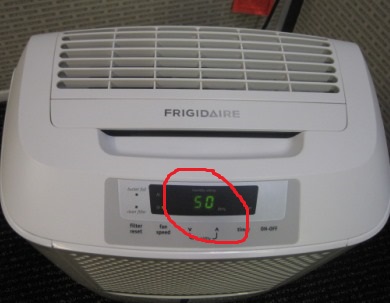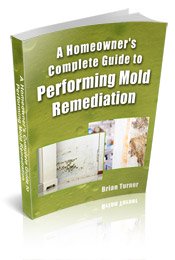Find a Mold Specialist Now
Click or Call, Toll-Free 24/7
Correct Dehumidifier Setting
The dehumidifier setting dictates what size dehumidifier you need. A dehumidifier used in a large basement, for example, must be larger than a dehumidifier used in small bathroom or laundry room. First, determine the square footage of the room where you will use the dehumidifier to make sure you know what size dehumidifier to purchase.
The size of a dehumidifier used must also be based on the amount of moisture in the area you want to dehumidify. For instance, a basement that feels somewhat damp and has a musty odor would need a smaller dehumidifier than a basement of the same size that feels and smells wet and has walls that sweat. In an area where you have a problem with mold growth, you’ll need a larger dehumidifier as well.
Dehumidifier Size
When talking about size, we mean how much moisture the dehumidifier will remove from the air. That is measured in pints. Most companies that make dehumidifiers offer a few different sizes. For instance, Frigidaire offers a 30 pint dehumidifier, a 50 pint dehumidifier and a 70 pint dehumidifier. A dehumidifier used in a very large space or a very damp space needs to be larger than one used in a small space that is not very damp. Choosing the correct size dehumidifier is important because if you select one that is too small, your results will not be satisfactory. You don’t want to choose one that is larger than what you need, though, because larger dehumidifiers cost more than smaller ones.
According to the Association of Home Appliance Manufacturers, the 30 pint dehumidifier would be fine for a moderately damp area up to 2000 square feet. For an area where you actually see some moisture, such as moisture on the walls or moisture seeping in from somewhere, you could still use the 30 pint dehumidifier in a space no larger than 1500 square feet. For a larger area or an area with significant mold growth, you’d need a larger size such as the 50 pint dehumidifier. For very large areas and/or very wet areas, the 70 pint dehumidifier would work best.
Dehumidifier Setting for Humidity Control
When you have a dehumidifier used to prevent the growth of mold in the home, you need one with a dehumidifier setting for humidity control. This setting allows you to select the exact amount of humidity you want in your home. To prevent the growth of mold, and all the associated health problems, the humidity in your home must stay below 50 percent humidity.
A good dehumidifier should shut off automatically when the humidity in the room drops below the amount you selected. It should turn back on automatically when the humidity starts to rise. Not only will this keep the humidity in your home constant at the level you selected, but it will also save on energy and therefore save you money on your electric bill.
When selecting the best dehumidifier for your needs, also look for one on which the dehumidifier setting for humidity is easy to control. You’ll want a dehumidifier with controls that are easy to reach and simple to use. The dehumidifier below is set to maintain a humidity level of 50%
Finding The Best Dehumidifier
When considering the available sizes of dehumidifiers, the need to control the exact amount of humidity in a home and to control it easily, as well as considering the efficiency of different brands of dehumidifiers, the best dehumidifier used in any setting in our experience is a Frigidaire. Frigidaire offers several sizes from which to choose, has the appropriate settings and controls, and does a great job removing excess moisture as well as bacteria from the air. You can follow this link to view the complete line of Frigidaire Dehumidifiers on Amazon.com. They have the best prices and their customer reviews are extremely helpful when comparing models.
Return From Dehumidifier Setting To Our Home Dehumidifier Ratings Page
Black Mold Health Symptoms Home Page






